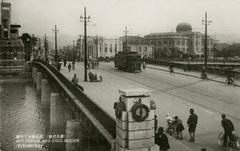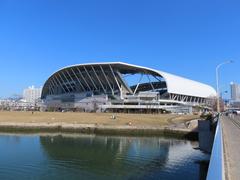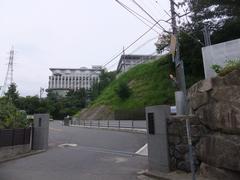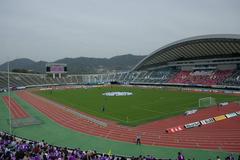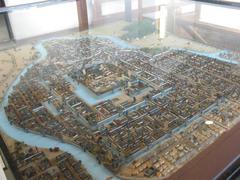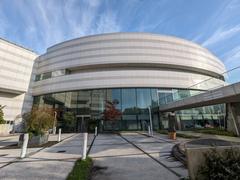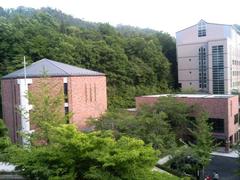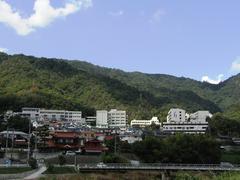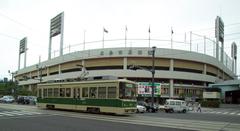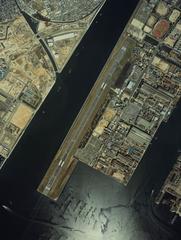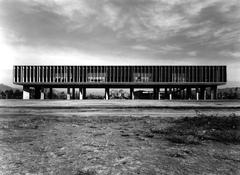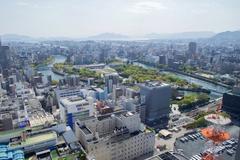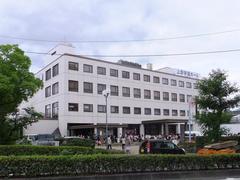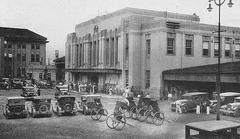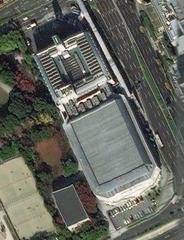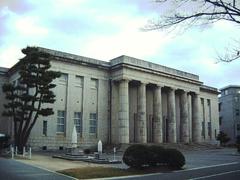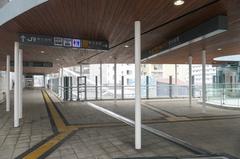Hiroshima Hypocenter Visiting Hours, Tickets, and Historical Site Guide
Date: 14/06/2025
Introduction: The Hiroshima Hypocenter and Its Enduring Significance
The Hiroshima Hypocenter marks the precise location directly beneath the detonation of the world’s first atomic bomb used in warfare on August 6, 1945. Situated in central Hiroshima’s Naka Ward, outside the modern Shima Hospital, this unassuming spot is a profound symbol of loss, resilience, and the enduring global quest for peace. The atomic explosion occurred approximately 580–600 meters above this site, instantly devastating the city below and forever altering the course of history. Today, the Hypocenter is a place for reflection, education, and remembrance. It is open to the public 24 hours a day, free of charge, and serves as an essential stop for anyone seeking to understand the impact of nuclear warfare and the city’s remarkable recovery (Japan Travel; Atlas Obscura; Japan Travel Note).
Table of Contents
- Introduction
- History and Cultural Significance
- Location and Access
- Site Description
- Visitor Information
- Guided Tours and Special Events
- Visitor Experience and Emotional Impact
- Photography and Conduct
- Nearby Attractions and Suggested Itinerary
- Practical Tips for Visitors
- Accessibility for International Visitors
- Etiquette and Cultural Insights
- Visual and Interactive Resources
- FAQ
- Conclusion and Further Resources
History and Cultural Significance
On the morning of August 6, 1945, at 8:15 a.m., the atomic bomb “Little Boy” detonated approximately 580–600 meters above the Hypocenter, releasing immense heat, blast winds, and radiation. The initial blast killed an estimated 70,000–80,000 people instantly; by year’s end, fatalities had reached approximately 146,000 due to radiation and injuries (mad-traveller.com; aboutjapan.japansociety.org). The Hypocenter, marked by a simple plaque, stands as a silent witness to this tragedy, serving as a focal point for remembrance and education about nuclear warfare.
Location and Access
Geographic Placement
The Hypocenter is located outside Shima Hospital at 1-1-23 Otemachi, Naka Ward, Hiroshima. This site is a short walk southeast from the Atomic Bomb Dome and adjacent to the Hiroshima Peace Memorial Park (Japan Travel).
Proximity to Other Hiroshima Historical Sites
- Atomic Bomb Dome (Genbaku Dome): A UNESCO World Heritage Site, less than five minutes’ walk from the Hypocenter (History Skills).
- Peace Memorial Park: The Hypocenter is just outside the park’s main area, making it ideal for inclusion on a walking tour (Japan Travel Note).
- Aioi Bridge: The original aiming point for the bomb, also nearby (Intrepid Scout).
Directions
- By Tram: Take tram line 2 or 6 from Hiroshima Station to Genbaku Dome-mae (about 15 minutes).
- By Bus: The Meipuru-pu sightseeing loop bus stops at the Peace Memorial Park (Japan Guide).
- On Foot: About 20-25 minutes’ walk from Hiroshima Station.
Site Description
The Hypocenter Plaque
A modest plaque embedded in the sidewalk outside Shima Hospital marks the Hypocenter. The inscription describes the events of August 6, 1945, in both Japanese and English, and is often adorned with flowers or folded paper cranes left by visitors as symbols of peace and remembrance (Japan Travel; Atlas Obscura).
Shima Hospital
The original Shima Hospital was annihilated in the blast, with all staff and patients killed instantly. The current hospital, rebuilt on the same site, stands as a testament to Hiroshima’s recovery and resilience (Japan Travel).
Urban Setting
Surrounded by modern buildings, shops, and restaurants, the Hypocenter’s subtle marker is a solemn focal point amid the city’s vibrant daily life, highlighting the contrast between past devastation and present renewal (Atlas Obscura).
Survivor Trees and Environmental Features
Within a two-kilometer radius, over 160 “A-bombed trees” (hibaku jumoku) survived the blast and have regrown, including a notable weeping willow just 370 meters away. Many lean toward the Hypocenter, a living symbol of survival and hope (Mainichi).
Radiation and Safety
Scientific studies confirm that Hiroshima’s radiation levels have returned to natural background levels and pose no risk to visitors. The city is safe and thriving (Travellers Worldwide; Travel With The Greens).
Visitor Information
Visiting Hours
- Hypocenter Plaque: Open 24 hours, year-round.
- Peace Memorial Park: Open at all times.
- Peace Memorial Museum: 8:30 AM to 5:00 PM (extended summer hours); closed Dec 29–31 (Nomadic Matt).
Tickets and Admission
- Hypocenter and Park: Free, no tickets required (Trip to Japan).
- Peace Memorial Museum: 200 JPY for adults; discounts for students and seniors.
Accessibility
- Wheelchair accessible pathways throughout the park and Hypocenter.
- Public restrooms and benches available.
- Coin lockers at the museum and tram stations.
Etiquette
- Maintain a respectful, quiet demeanor.
- Photography is permitted outdoors; some indoor exhibits restrict photography.
- Leaving flowers or cranes is a common gesture of remembrance (Atlas Obscura).
Amenities
- Restrooms and tourist information at the Peace Memorial Park Rest House (Travel Yes Please).
- Cafés and shops nearby offer local specialties.
Integration with Nearby Sites
The Hypocenter is best visited as part of a self-guided or guided tour of the Peace Memorial Park, including the Atomic Bomb Dome, Children’s Peace Monument, Cenotaph for the A-bomb Victims, Peace Bell, and Peace Memorial Museum (Intrepid Scout; Japan Travel Note).
Guided Tours and Special Events
- Volunteer Guides: The Hiroshima Volunteer Guide Association (HVGA) provides free tours in English and other languages, bookable in advance (HVGA).
- Audio Guides: Available at the Peace Memorial Museum for a small fee.
- Special Events: Annual Peace Memorial Ceremony on August 6th, with moments of silence and peace declarations; additional educational events are occasionally held (Japan Travel Note).
Visitor Experience and Emotional Impact
Visiting the Hypocenter and nearby memorials is a deeply moving experience. Many visitors find the Peace Memorial Museum’s exhibits, which include personal narratives and artifacts, to be emotionally powerful (JapanTravelNote; Traveler Bibles). Prepare for solemn reflection, and allow time to process the historical weight of the site.
Photography and Conduct
- Photography: Allowed outdoors at the Hypocenter and Dome. Flash and tripods may be restricted inside the museum.
- Conduct: Maintain silence and decorum, especially around memorials. Eating and drinking are not permitted in memorial areas.
Nearby Attractions and Suggested Itinerary
- Atomic Bomb Dome: UNESCO World Heritage Site (JapanTravelNote).
- Children’s Peace Monument: Dedicated to child victims of the bomb.
- Cenotaph for the A-bomb Victims: Contains names of known victims.
- Peace Bell: Visitors may ring the bell for peace.
- Peace Memorial Museum: Comprehensive exhibits on the bombing and aftermath.
A typical visit to the park, including the Hypocenter, Dome, and museum, takes 1–2 hours (HVGA).
Practical Tips for Visitors
- Best Time to Visit: Spring and autumn offer pleasant weather. Summer can be hot and humid; winters are mild (The Broke Backpacker).
- What to Bring: Comfortable shoes, water, sun protection, tissues/handkerchief for emotional moments.
- Language: Most signs are in Japanese and English; staff and guides often speak English.
- Nearby Food: Cafés and restaurants serve Hiroshima-style okonomiyaki and other local dishes.
Accessibility for International Visitors
- Currency: Japanese yen (JPY); ATMs and currency exchange at Hiroshima Station and hotels.
- Wi-Fi: Free public Wi-Fi in the park and museum.
- Emergency Services: Dial 110 for police, 119 for fire/ambulance.
Etiquette and Cultural Insights
- Modest attire is encouraged.
- Leaving origami cranes or flowers is a meaningful gesture.
- Silent reflection is customary in memorial areas.
Visual and Interactive Resources
Prepare for your visit with virtual tours and photo galleries available on official sites (Hiroshima Peace Memorial Museum).
Frequently Asked Questions (FAQ)
Q: Is the Hiroshima Hypocenter safe to visit?
A: Yes, radiation levels are at natural backgrounds, and the area is completely safe.
Q: What are the Hypocenter’s visiting hours?
A: Open 24 hours a day, year-round.
Q: Is there an admission fee?
A: No, the Hypocenter and Peace Memorial Park are free to access.
Q: Are guided tours available?
A: Yes, through the Hiroshima Volunteer Guide Association and other providers (HVGA).
Q: Is the site wheelchair accessible?
A: Yes, the park and museum accommodate wheelchairs and mobility aids.
Conclusion and Further Resources
The Hiroshima Hypocenter is a powerful site of remembrance, reflection, and education. Visiting the Hypocenter and the surrounding Peace Memorial Park honors the past and strengthens our collective commitment to peace. Take advantage of accessible facilities, free admission, and informative tours to ensure a meaningful experience. For a richer visit, explore virtual resources, download the Audiala app for audio guides, and follow updates on social media.
References and Official Resources
- Japan Travel, Hiroshima Hypocenter Overview
- Atlas Obscura, Hiroshima’s Hypocenter
- Japan Travel Note, Hiroshima Peace Memorial Park and Hypocenter
- History Skills, Atomic Bomb Dome Educational Resources
- Intrepid Scout, Self-Guided Walking Tour Hiroshima Peace Memorial Park
- Mainichi, Survivor Trees Near Hiroshima Hypocenter
- Travel Yes Please, Visiting Hiroshima Peace Memorial Park
- The Broke Backpacker, Hiroshima Travel Safety and Tips
- HVGA (Hiroshima Volunteer Guide Association), Guided Tours Information
- Nomadic Matt, Hiroshima Travel Guide
